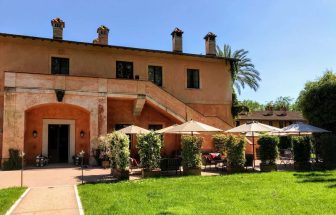
One of the things you need to know about touring Rome (and many other places in Italy) is that if you want to see something really special, then you’ll have to pay extra for it by going on a guided tour. While tours can certainly eat into your travel budget, they can also transform a trip into something extraordinary.
There are a number of reputable tour companies that can take you down into the dungeons (in groups of 12 or fewer). Last month, I was lucky enough to join The Tour Guy, a small but growing tour guide company, as a guest on its Colosseum-Dungeon tour.

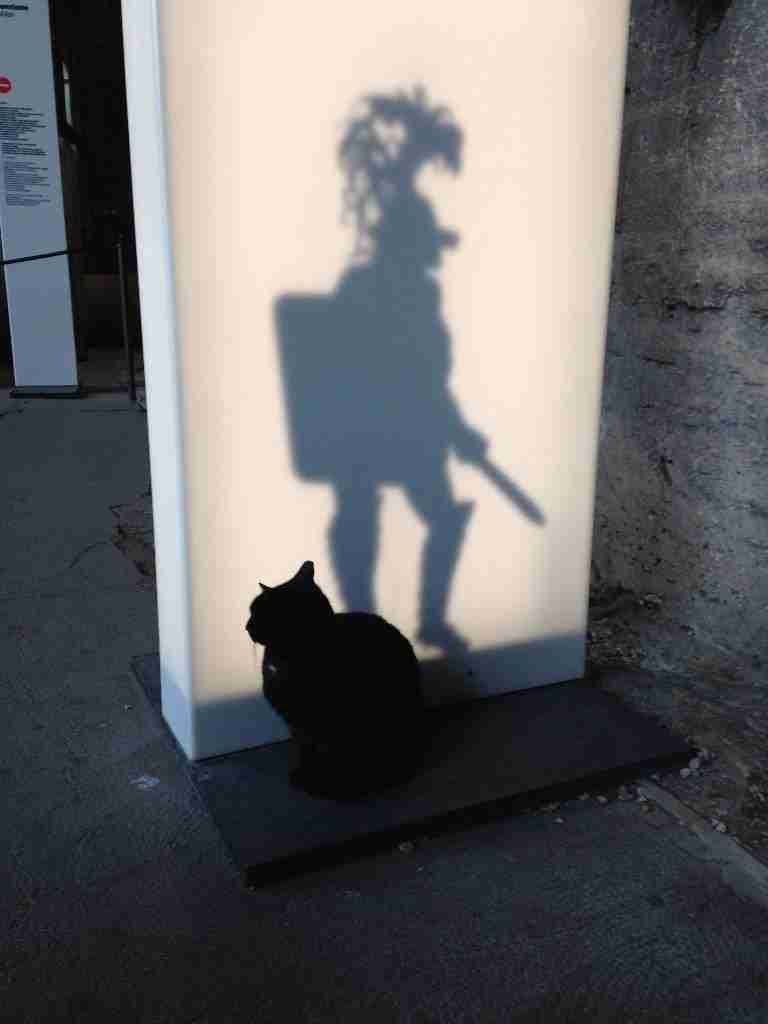
“Why Should I Take a Guided Tour of the Colosseum?”
I had always wanted to see the dungeons of the Colosseum, those underground niches where once were housed thousands of roaring, barking, gnashing, lumbering wild animals primed for gladiatorial showcases and death matches.
The Colosseum dungeons are a gruesome, if not key, part of the Flavian Amphitheater’s history. And the only way anyone can see them today — meaning, walk down into and around them — is by booking a tour with a private guide. This limits the number of visitors into the bowels of stadium, thereby keeping wear and tear on the nearly 2,000-year-old monument to a minimum.
I’m a fairly new convert to going on guided tours and I think that may be one reason why I may be able to assess them in a way that is helpful to less experienced travelers.
I’ve always been one to do things on my own because I like to dwell on the little details, sketching out info in a notebook, taking photos, reading descriptions from my guidebook or from online.
On the other hand, I love how a good tour guide can make sure you learn about things that are not in a guidebook or that are glossed over. The Tour Guy’s Rafaella was an enthusiastic guide who knew how to point out the details as well as keep the three-hour tour on track.
At the beginning of the tour, Rafaella handed our small group headsets; these marked us all as tourists, of course, but they also made it easy to listen to the tour as we wandered. Not only that, but I felt free to lag behind and wander a bit off course to inspect a ruin or take a photo so long as I stayed in the range of the headset.
The headsets were fairly discreet and they also allowed Rafa to speak as she regularly would rather than yell to be heard. In some ways it felt as if I had my own tour guide, even as I strolled around with six other visitors, teenagers to seniors, who hailed from Florida and California-by-way-of-London. They were a bright and inquisitive group, which always helps on a group tour.
Another bonus of going on a group tour is when another traveler asks a question or questions that you’d have never thought to raise.
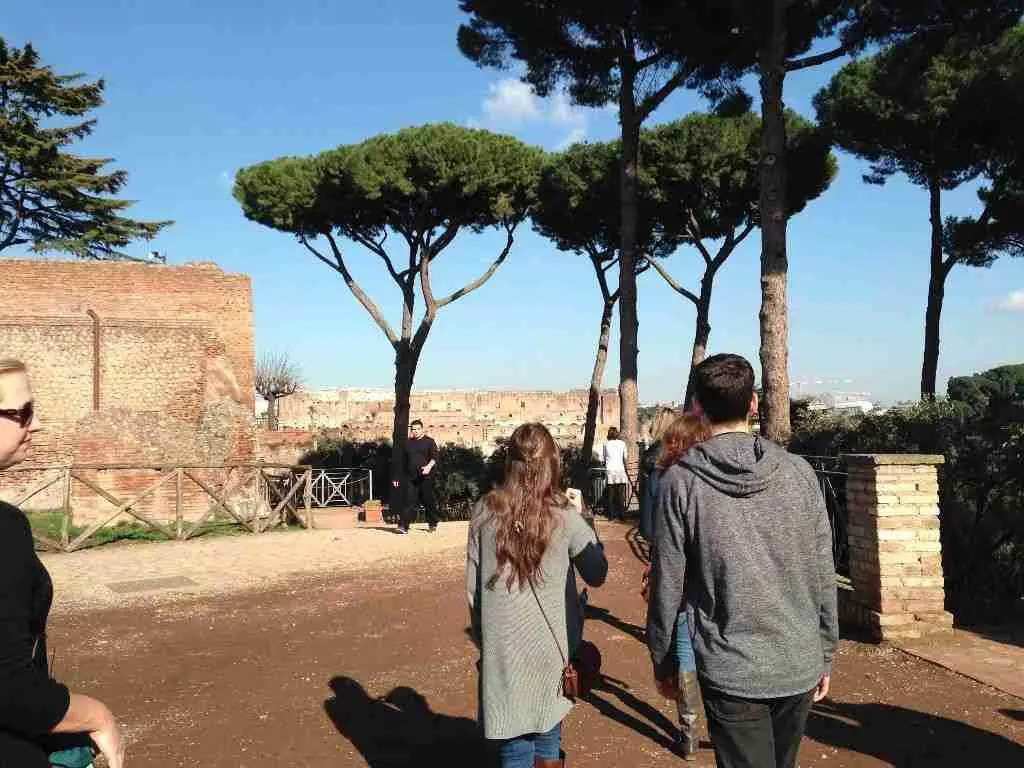
The route of the tour was also a delightful surprise. We started at the Forum, walked up the hill to the Palatine, then entered the Colosseum.
Even though I have toured all three of the sites before, I had never followed this itinerary myself. But it made sense chronologically to learn first about the Forum, the center of public life in Ancient Rome dating as far back the 8th century BC; then the Palatine, the hill on which Ancient Roman aristocracy built their palaces; and then the Colosseum, which was built in the early years of the Imperial Roman era (between 70 and 80 AD).
Many tourists, including myself, tend to head straight for the Colosseum and then try to fit in the Forum and Palatine; Rafaella’s itinerary was smarter and better.
Getting Into the Colosseum Dungeons
While I could fill several posts with the things we learned about the Forum and Palatine, I will cut to the chase here and tell you about visiting the Colosseum and the thrill of getting into the parts of it that are off-limits to the regular visitor.
After our group arrived in the Colosseum, we proceeded to walk around the outside corridor until we reached an area with an elevator and a locked gate. We waited for a docent from the Colosseum to come with the keys to let us through the gate (how cool is that?!). Then we followed Rafaella and the Colosseum docent to the platform that feels as close to a rock star stage as most people will ever get to experience.

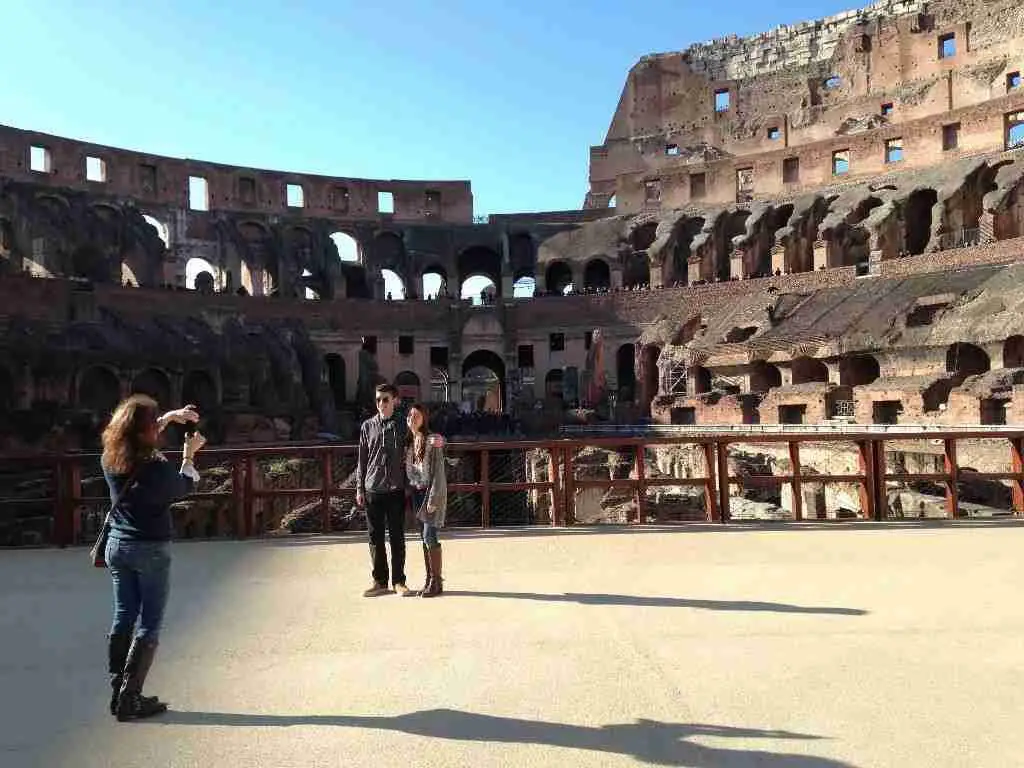
Big groups were gathered above us taking photos of one of the best views of the Colosseum available to regular visitors to the stadium. Indeed, the 10 to 12 of us who were standing on the Colosseum platform away from the masses couldn’t help but feel special.
Following that rush, we headed down under the stadium to the Colosseum dungeons. It’s easy imagine the gladiators following the same paths, listening to the roars of crowds and animals and smelling the stench of blood, sweat, manure, as they readied for battle. The feeling was not unlike what you see in behind-the-scenes shots of footballers loosening up prior to heading out to the pitch under the gaze of thousands of spectators.


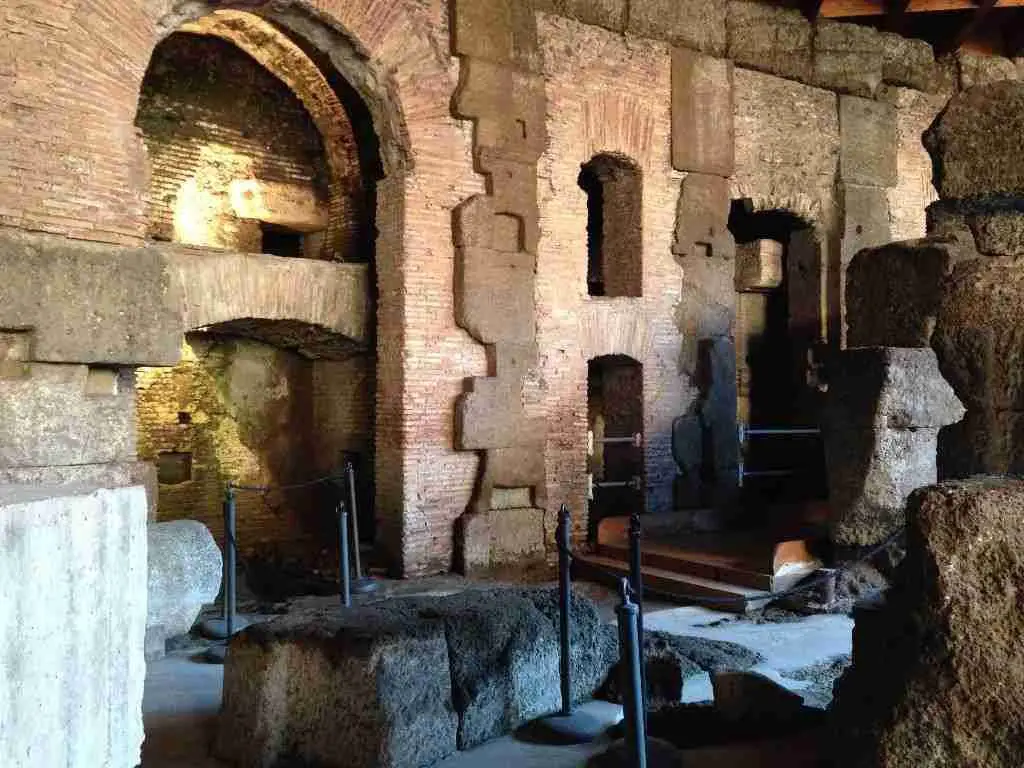
It was cold and slightly eerie under the Colosseum but never especially dark. We could see that some of the marble that once covered the entirety of the monument was still visible in these underground halls. Then we got to the niches where the beasts had once been housed.
Tall niches and wide niches in the Colosseum dungeons held everything from lions and tigers to elephants and giraffes to even slaves. Approximately 9,000 animals were slaughtered at the Colosseum during the inaugural games alone. Consider that gladiatorial contests continued for another 300+ years after that and animal hunts continued for almost another five centuries, you can just imagine how haunted these dank lairs must be.
Rafaella also pointed out at least one of the ancient hydraulic lift mechanisms that would have allowed the caged animals to be lifted up to the arena floor and released. Though we were consigned to only a half-moon portion of the underground, it was still fascinating to take all of this history in without the usual noise and jostling that comes with touring the Colosseum.
Visiting the Upper Level of the Colosseum
After the underground, we took the lift to the almost-top of the Colosseum. There is a set of stairs that goes up even farther than most tourists are allowed. This upper section is where one gets the full near-aerial view of the expanse of the stadium and its ruins. It’s where you take photographs like this one.
I would like to thank The Tour Guy for hosting me on their Colosseum Dungeon tour. If you are the type of traveler who is obsessed with Ancient Rome or who wishes to go beyond the gates to see something not many get to see (who doesn’t want to do that?!), I highly recommend booking this tour. I’ve visited the Colosseum on numerous occasions but this was the best visit of them all.
Tour Details
The Tour Guy Colosseum “Dungeons, Third Level and Arena Floor,” Roman Forum, and Palatine Hill
Cost: €79, adults; reduced price for seniors, students, youth (7-17) – rates subject to change
DIY Tour of the Colosseum
The cost of a regular ticket to the Colosseum, Forum, and Palatine is valid for two consecutive days. Kids under 17 get free admission with valid ID. Advanced purchase of regular tickets to the Colosseum/Roman Forum/Palatine Hill is available online for a small additional fee.
Last updated on May 8th, 2021Post first published on March 30, 2015


![Visiting the Colosseum Dungeons on a Guided Tour [Review]](https://www.italofile.com/wp-content/uploads/thumbs_dir/IMG_2917-pmi1wax5pszqin8aushjegt3czs0g7iqnfgqvtsnr0.jpg)
![Visiting the Colosseum Dungeons on a Guided Tour [Review]](https://www.italofile.com/wp-content/uploads/thumbs_dir/image5-e1581054839402-pmi1w9zbiyyg719o0a2wtz1mrlwn8if0bat9eju1x8.jpg)


